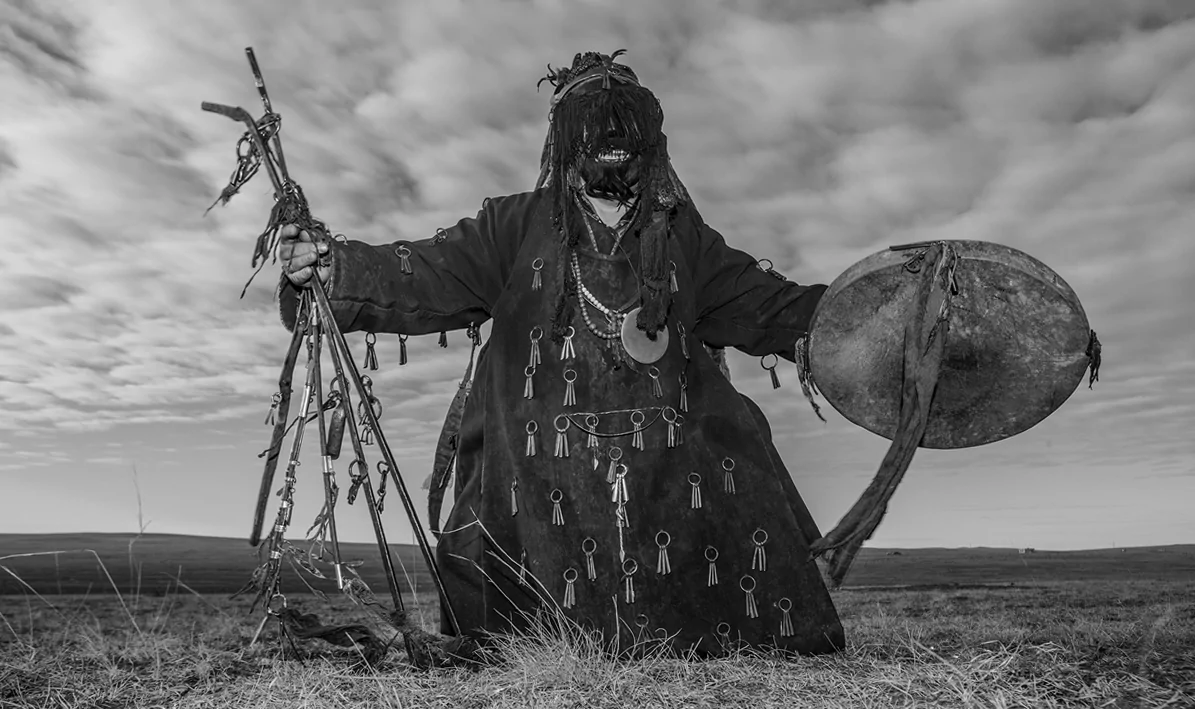The Black Shamans
Therefore, Shamans were labeled according to the direction from which they drew their power. The Ongon of a Shaman who was supported by Black deities and spirits was known as a shaman of the Black side. The Shamans of this side worshipped their own ancestors in the period of tribal communities, the Holy |Suld| Black Spirit during the period of the Provincial System and “Army Cruel Black Spirits” after the establishment of the State system. This was linked to the increasing importance of military power, the protection of members of the province, and the upholding of state authority.
Black invocations were, therefore, intended to overcome evil deeds and negative consequences by pitting might against might. The Spirits of Heaven and Water were divided into Quiet and Cruel; the Cruel ones respected and worshipped as Black Heaven. These spirits were situated in an honored location at the rear of the ger and all kinds of fire, life, and assets were attributed to them.
The Black Spirits of the Shaman religion are locked in personal struggles against every kind of evil, protecting and saving people from harm, acting as agents of vengeance and enforcers of the White Spirits, so the Shamanist religion ensured associated with these wild black spirits and became powerful, were also called Black Ongons.
The Shamans of the Black Side, as the Udgans |Etuggens| in Matriarchal ages and Zayran Tengger or Zayrans in Patriarchal ages, were interpreters and advisors in peacetime, conducting foreign policy, which was mostly to make peace and strengthen alliances. In wartime, their role was to motivate the soldiers and population in order, hopefully, to secure victory for their own side.
As a component part of the Shaman religion, the shamans of the Black side were also known as Shamans “of the black”, “with black attitude” and similar titles. The Black Shamans declined after the seventeenth century when Yellow Buddhism gradually became predominant in Mongolia.
The White Shamans
In contrast to the Black Shamans, who epitomized courage and iron discipline, the White Shamans personified humanity. Instead of pitting force against force and bad against bad like the Black Shamans, the White Shamans had a set of beliefs and customs related to White deeds, habits, and thoughts. In ancient times, the White Shamans created rituals that called upon the peaceful masters or spirits of the White Side; only directing their worship and prayers in this direction. Consequently, Mongolian shamans became divided into Black and white factions.
According to the surviving sources, White Shamans were relatively numerous. In general, they carried out activities and rituals concerning the general direction peoples’ lives were taking: most directly through keeping public and administrative order. They instructed people to commune with nature, water, and earth spirits; pacifying angry spirits and undoing the damage they caused. White Shamans also cared for the health of the people.
Thus, the Mongolian Shamanist religion has, since its emergence, developed for at least 5000 years, improving through close interaction with ideological forms and customs from other oriental nations. In particular, Buddhist teachings from India played a major role as a cornerstone of the formation of the first Mongolian official state.


Comments are closed.